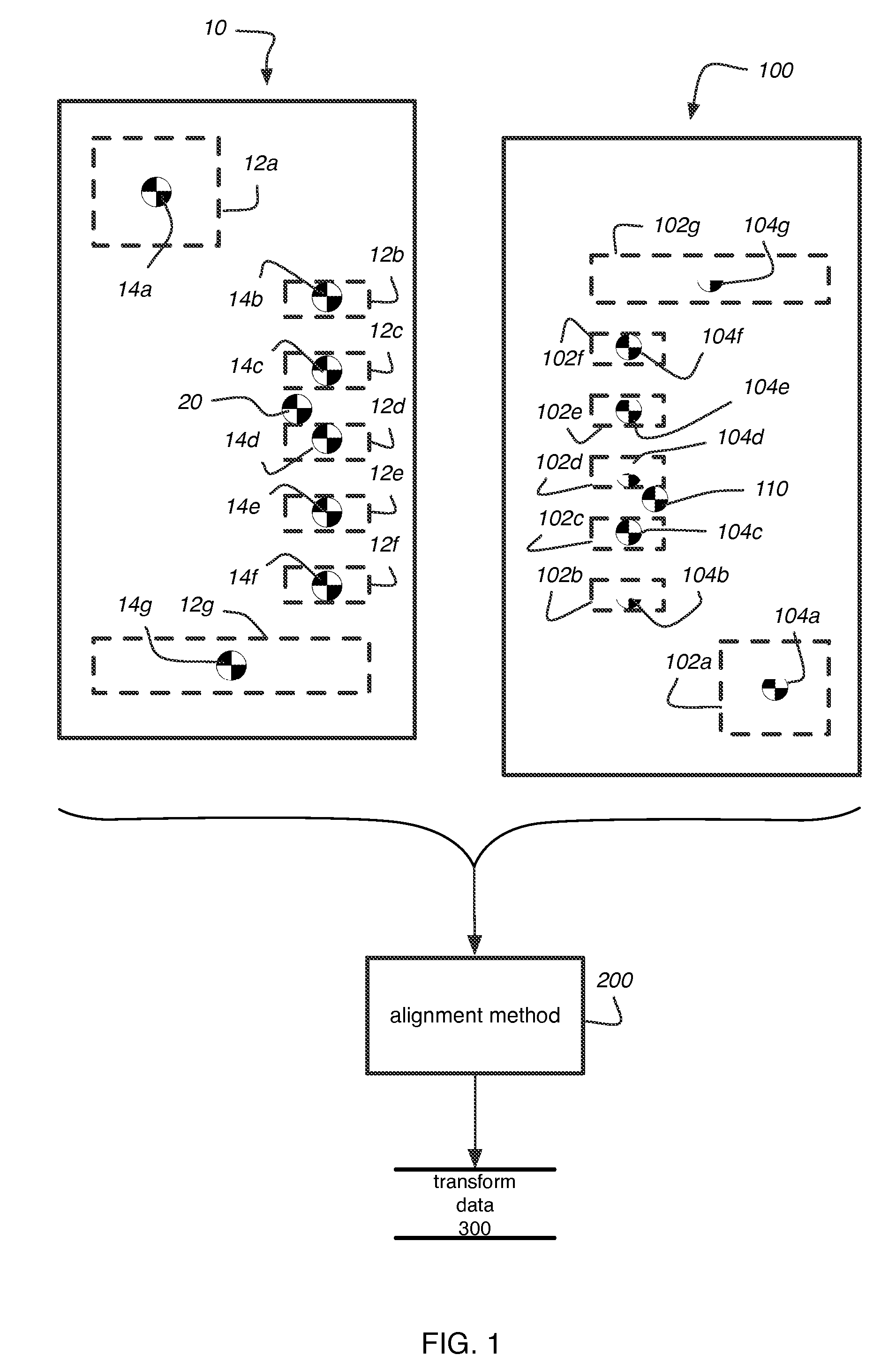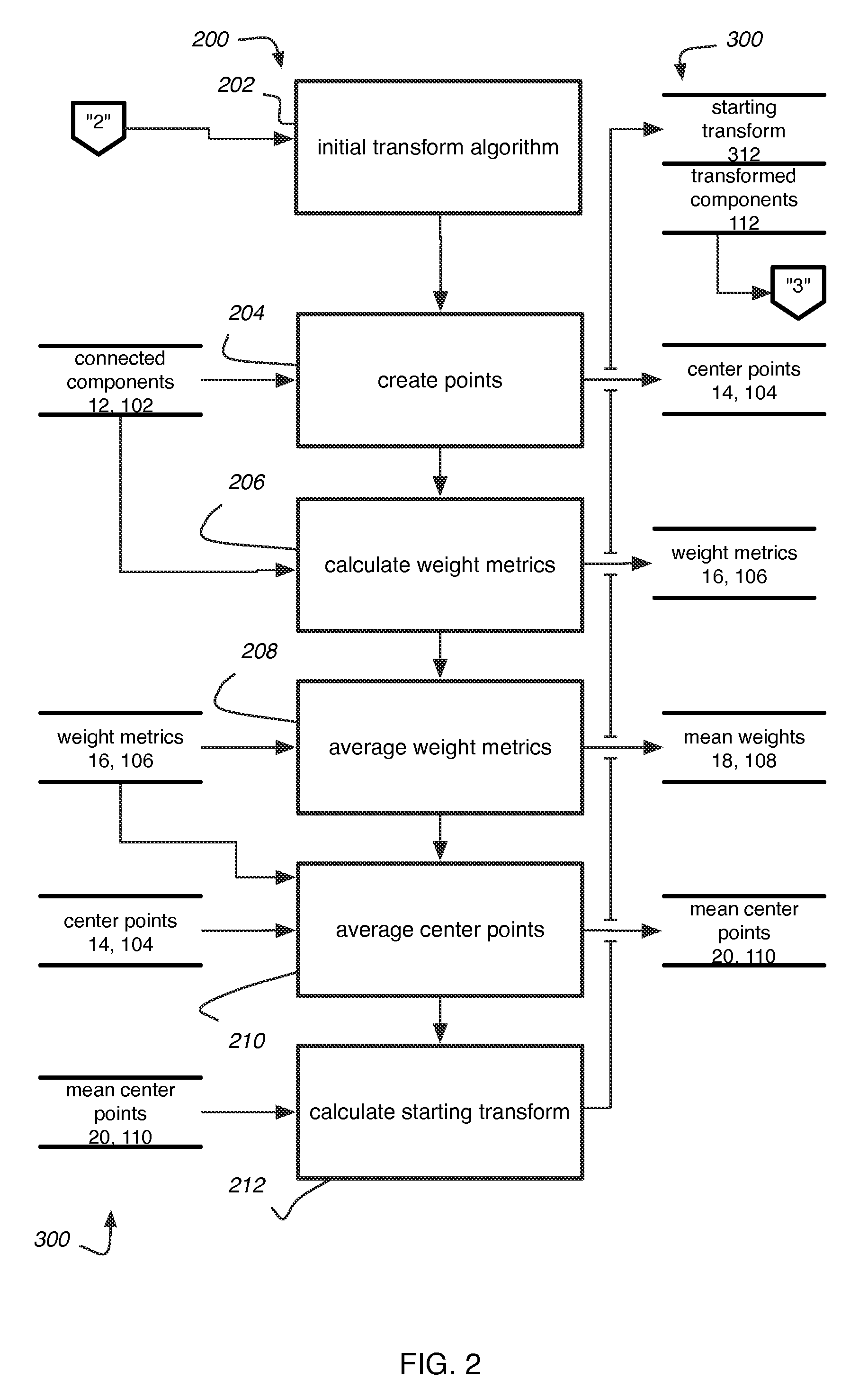Method for document to template alignment
a document and template technology, applied in the field of image processing, can solve the problems of little assurance that a scanned document has been fully scanned, low degree of certainty, and inability to achieve economical throughput, and achieve the effect of reducing cpu time costs and high degree of certainty
- Summary
- Abstract
- Description
- Claims
- Application Information
AI Technical Summary
Benefits of technology
Problems solved by technology
Method used
Image
Examples
Embodiment Construction
[0015]In context of the inventive method, the words “document” and “template” generally are meant to refer to electronic images that can be manipulated by a general purpose or custom-designed data processor. A “connected component”, within either a document or a template, is a contiguous image area or visual feature of substantially uniform or homogeneous color, opacity, and / or brightness. Connected components can be overlapping within the same electronic image, and can be oriented at any angle with reference to each other and to the overall image. One example of a connected component is a printed letter. Another example is a line. A third example is a reverse-printed header, where the header text is transparent within a printed header background.
[0016]It has been noted that many documents, especially financial form documents, include sets of connected components that can distinguish documents of a particular “family” from documents of other families. For example, a 1040-EZ tax form...
PUM
 Login to View More
Login to View More Abstract
Description
Claims
Application Information
 Login to View More
Login to View More - R&D
- Intellectual Property
- Life Sciences
- Materials
- Tech Scout
- Unparalleled Data Quality
- Higher Quality Content
- 60% Fewer Hallucinations
Browse by: Latest US Patents, China's latest patents, Technical Efficacy Thesaurus, Application Domain, Technology Topic, Popular Technical Reports.
© 2025 PatSnap. All rights reserved.Legal|Privacy policy|Modern Slavery Act Transparency Statement|Sitemap|About US| Contact US: help@patsnap.com



